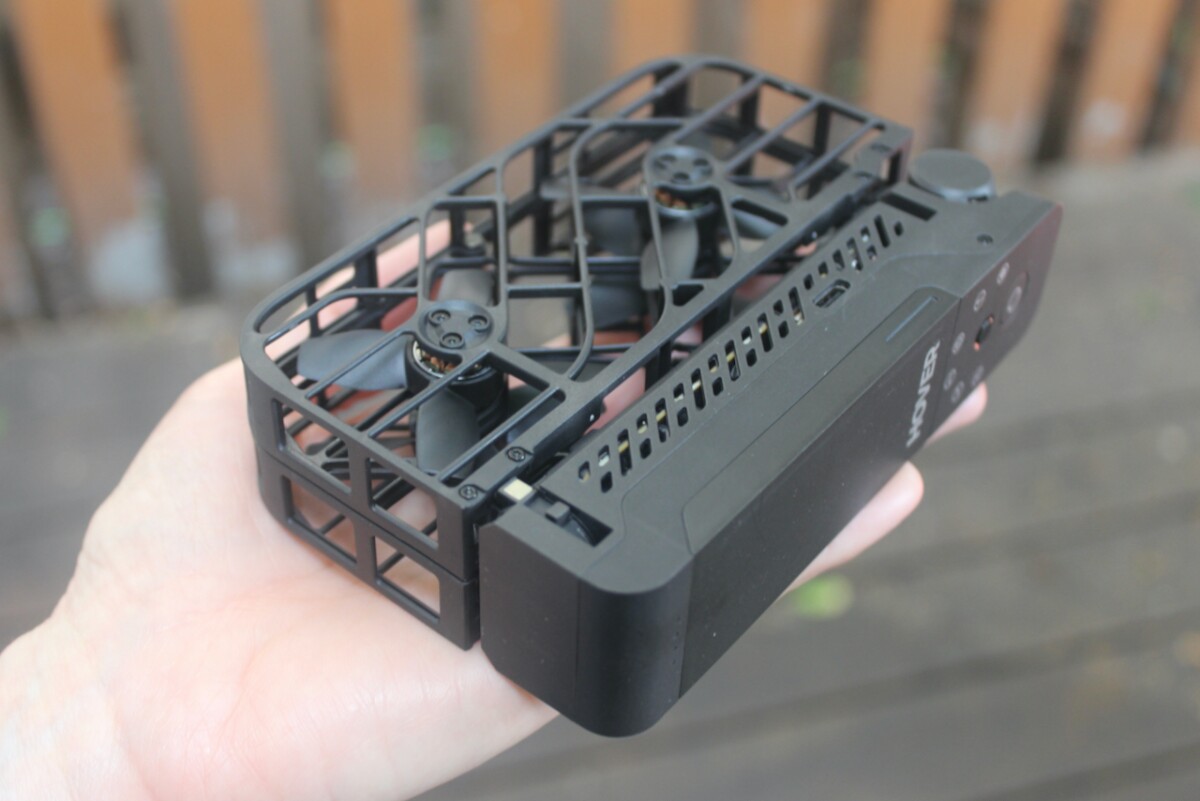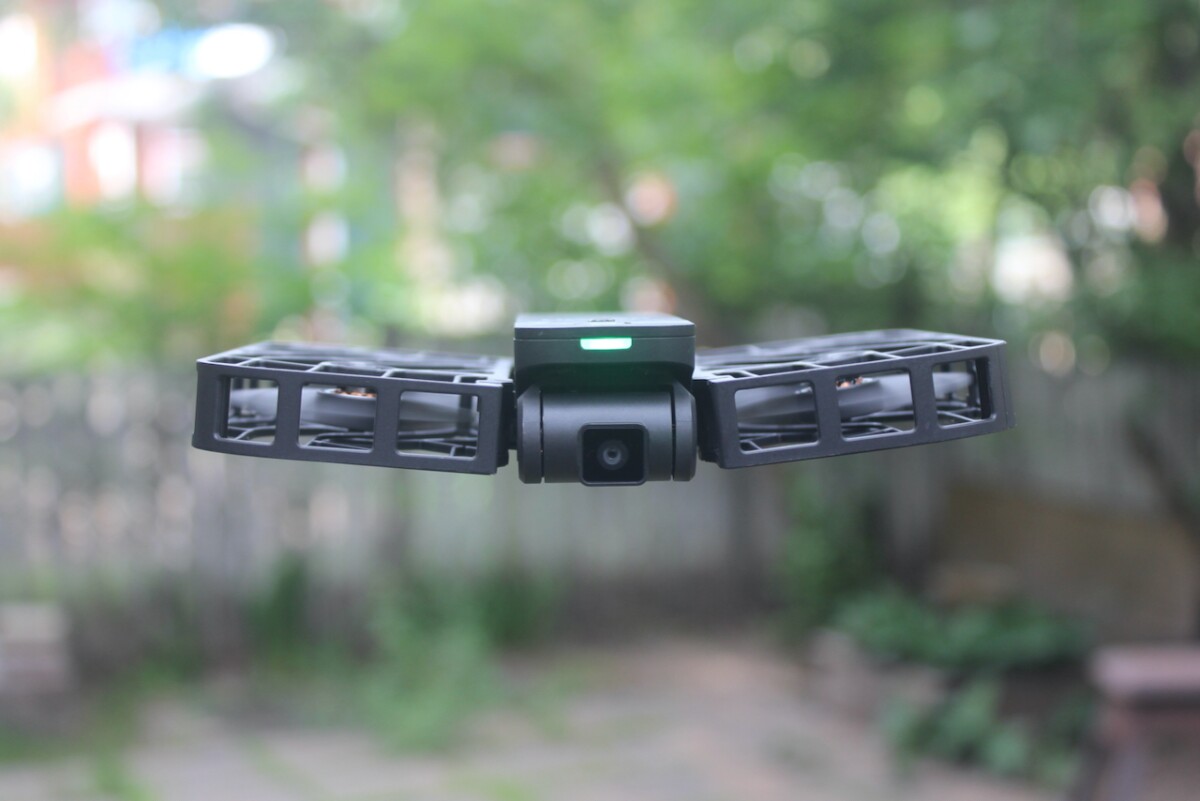
Review: Hover Camera X1 is the ideal drone for most people
|
|
Time to read 4 min
|
|
Time to read 4 min
By Ben Coxworth June 23, 2023
VIEW GALLERY - 6 IMAGES Most folks aren't big-time aerial cinematographers, so they don't need a fancy $1,000-plus drone – what they do need is something small, inexpensive and easy to use, that still shoots great video. As I discovered, the Hover Camera X1 fits that bill to a T.
At a glance
Currently the subject of an Indiegogo campaign, the X1 mini quadcopter is made by Chinese drone manufacturer ZeroZero Robotics. A pledge of US$329 will get you one, if everything goes according to plan. Once the campaign is over, it will retail for $469.
The X1 features a hinged body that allows it to be folded down to a 128-g (4.5-oz) package measuring 127 by 86 by 31 mm (5 by 3.38 by 1.22 in) when not in use. Additionally, thanks to protective caging around the propellers, it's able to take off from the user's hand without any risk of injury.
One charge of the drone's quick-swappable 1,050-mAh lithium battery is good for approximately 11 minutes of flight time, depending on usage – speaking of which, the X1 can be remotely controlled or set to one of several preprogrammed flight modes via an accompanying iOS/Android app.
It has a maximum video resolution of 2.7K/30fps, and utilizes both a mechanical gimbal and an electronic image stabilization system to keep its footage smooth and level. It can also shoot 12-megapixel stills. Both video and photos are stored on 32GB of internal memory. Its camera view is transmitted in real time to the app via Wi-Fi, up to a maximum distance of 30 meters (98 ft).
The basic flight modes consist of Hover (in which it hovers in place, panning back and forth with the user as they move from side to side); Follow (flies along behind the moving user, keeping them in the shot); Zoom Out (starts close to the user, then flies back to a wider shot); Orbit (flies in a circle around the user, keeping them centered at all times); and Bird's Eye (looks straight down on the user from above).
Perhaps its most notable feature, however, is the fact that it can also be used without the app or a controller of any kind. Instead, you use two physical pushbuttons on the drone to switch between the different modes, then send it on its way.
Utilizing facial and body recognition algorithms, along with motion prediction algorithms, it proceeds to automatically keep you in the shot while flying in the designated pattern. When it's finished, it simply comes back to you and lands on your outstretched hand – pretty cool, and convenient!
I found the initial learning curve to be a little on the steep side, due to the fact that neither the written instructions nor those in the app covered everything I wanted to know (such as how to switch between shooting videos and photos, or adjust the shooting angle). After some experimentation, though, I eventually got it figured out.
And true to ZeroZero's claims, the X1 is indeed very much usable without a smartphone anywhere in sight. That said, you do need the app for Manual Control mode – which is very easy to use, by the way, thanks to clear up/down, left/right, etc labels on the control screen.
A smartphone is also necessary if you want to record sound, as the app does so via your phone's mic, then syncs it up to the drone's video once the footage has been downloaded. In order to keep that audio from consisting solely of the X1's whining motors, the app applies a digital noise filter to its recordings. I found that as a result, the footage was almost completely silent – human voices were still picked up well, however, as long as they originated close to my phone.
As you can see in the video at the bottom of the page, the X1 did a great job when I took it out on several bike rides and walks. I particularly liked its Follow mode, although it would be nice if the drone could be made to keep following its user at a flat angle, instead of rising up above them. That way, there'd be little if any chance of it running into overhanging branches.
The more advanced Dolly Track mode, in which the X1 looks back at its forward-moving user while flying in front of them, was a bit of a challenge. Small variations in my forward trajectory would essentially "shove" the drone off to one side of the road or the other … it was kind of like trying to steer a trailer that I was pushing in front of me, instead of towing behind.
And no, the X1 does not have a forward-facing obstacle avoidance system, although it does utilize a separate downward-facing camera and two lasers to gauge its distance above the ground. The one time I did inadvertently run it into a branch, it still managed to smoothly self-land itself instead of just plummeting to the asphalt.
All in all, I'd say that the Hover Camera X1 is pretty much perfect for anyone who doesn't plan on opening a full-service video production company anytime soon, but who does want to get some slick-looking aerial shots of themselves and/or their surroundings with as little hassle as possible.
When it comes to what most people want, the X1 is definitely the way to go.
Product page: Hover Camera X1




